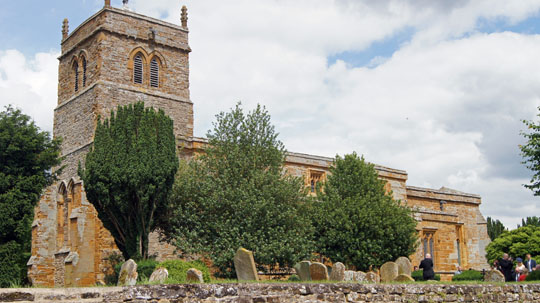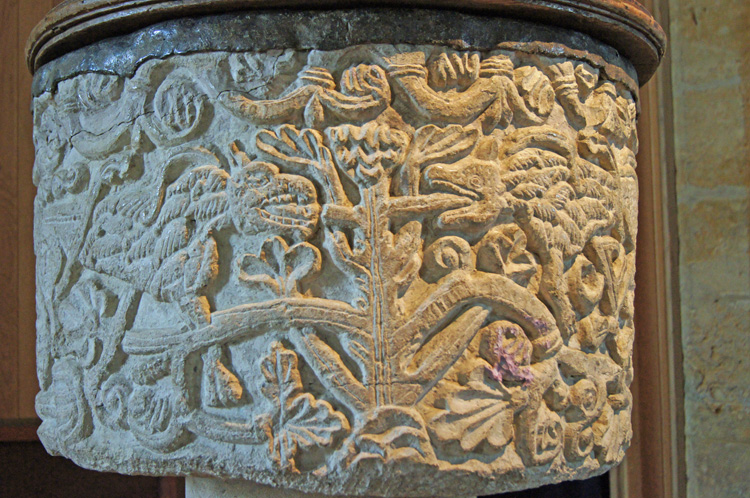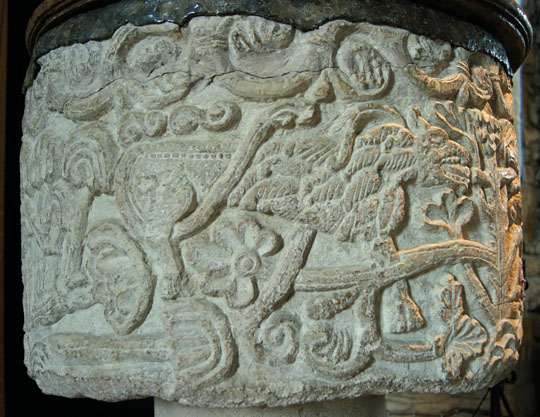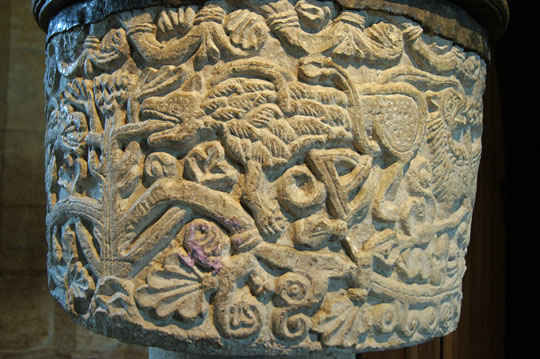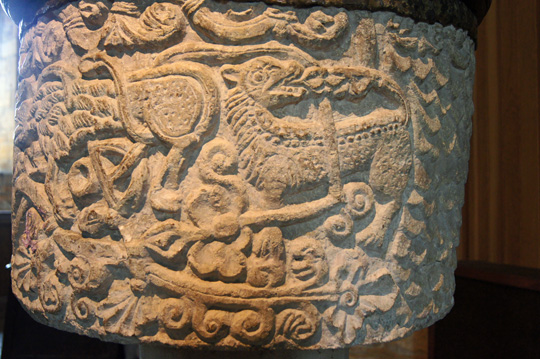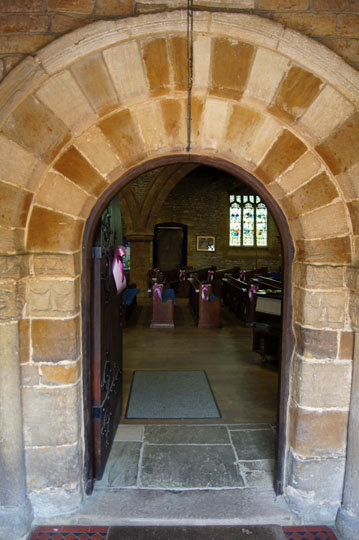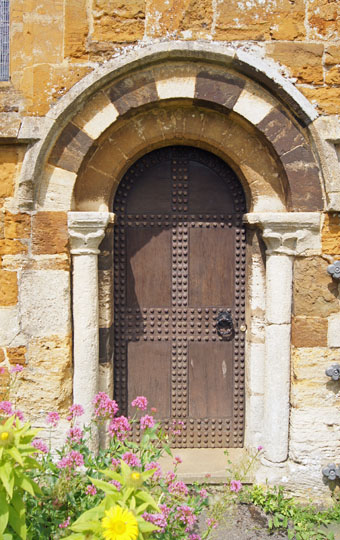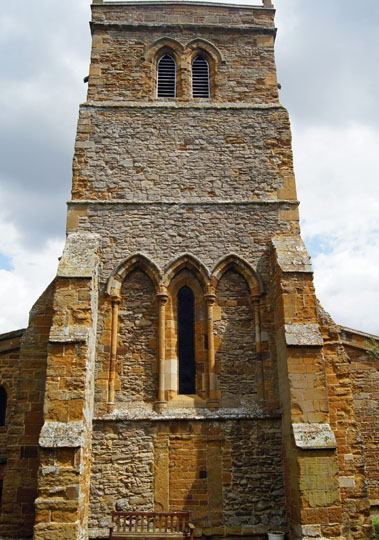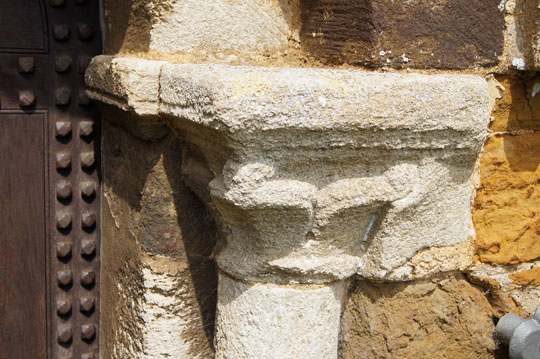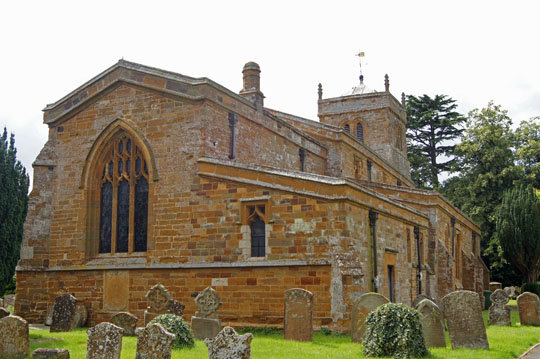|
Alphabetical List |
|
|
|
|
|
|
|
County List and Topics |
|
|
|
Please sign my Guestbook and leave feedback |
|
|
||||||||||||||||||||||||||||
|
-looking (and badly weathered) corbel tower along its top stage complete with a distinctly Norman-looking two-headed monster! This form of decoration is not typical of Early English architecture at all. Putting all this together, it seems to me that the existing church was probably built in the Transitional period. This would explain the untypically plain Norman south doors and the slightly anachronistic corbel table around what appears to be a wholly Early English period tower. None of the literature says this, so I may be wrong of course but its the only rational explanation I can come up with. It’s an oddity, Harpole. There is no Church Guide to be had, yet inside there is a copy of a huge academic work about the church that would take a long time to read and sadly for me, but happily for the couple, a wedding was about to take place so we I had no time to read it! This is a modest church, unused to visitors it seems, and yet that font is well worth a detour to visit. It may not stand comparison with the likes of Eardisley and Chaddesley Corbett, but beyond them I can’t think of too many others that are better. I can’t claim that I “discovered” Harpole: I read about its font in a book first published in 1908. Not only, however, is it not covered by Simon Jenkins but it doesn’t make it into the new edition of “Betjeman’s Best British Churches” which describes (rather superficially) 2500 churches. Well maybe they’re right because if Norman fonts don’t interest you then there it’s hardly an outstanding church. But if you are close to this pretty little church and you don’t make a detour you should give yourself a good kicking! |
 |
|||
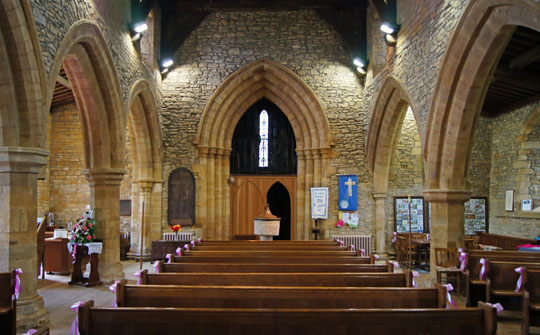 |
|||
|
|
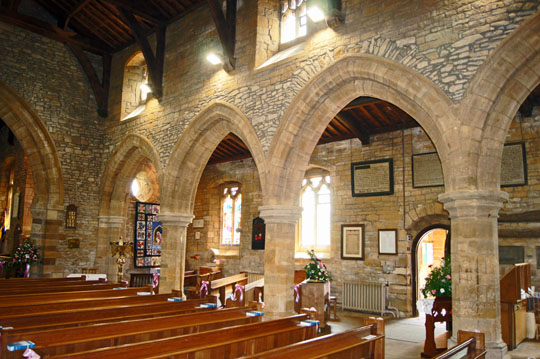 |
|||
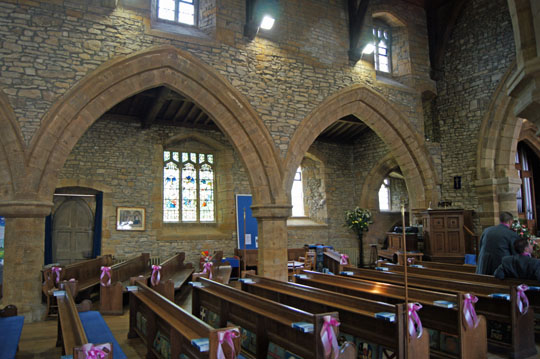 |
|||
|
The two aisles. The north aisle arches (left) are a little more squat and have wider bays than the south (right). Note the later clerestory with its Perpendicular windows. |
|
|
||||||||||||||||||||||||||||
|
|
||||||||||||||||||||||||||||||||||||||||||||||||||||||||||||||||||||||||||||||
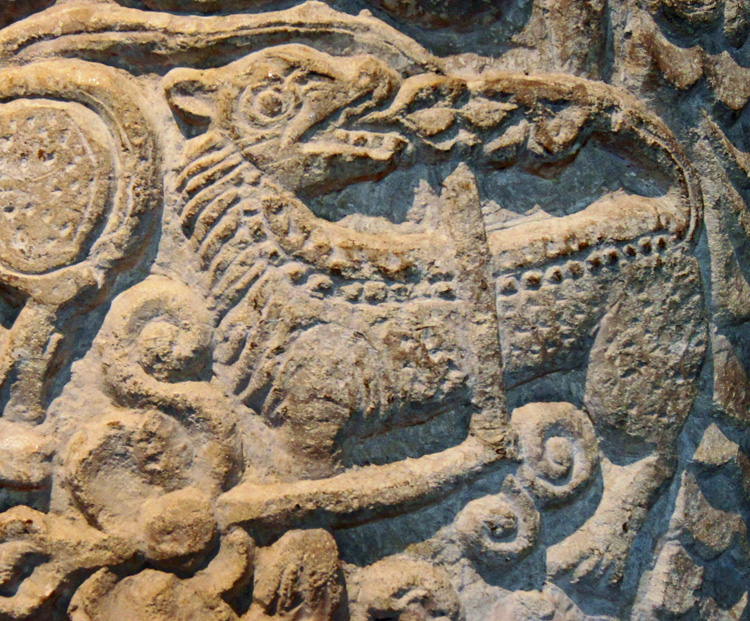 |
|
A close-up of the dragon on the north western side. He seems to be eating his own tail. |
|||||
 |
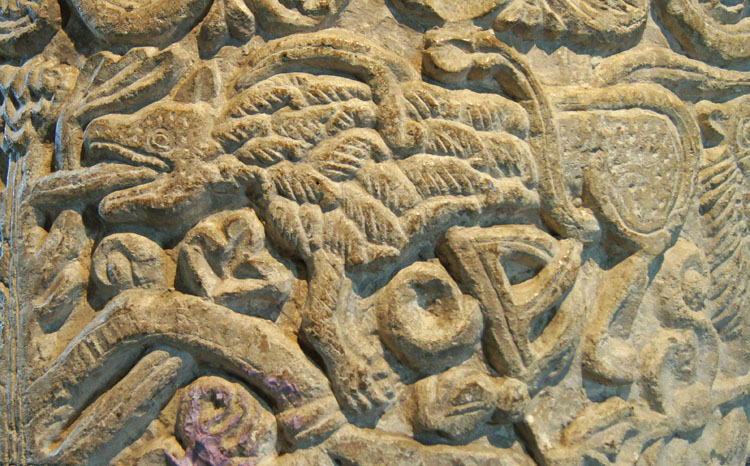 |
||||
|
Left: Oddly, the western side has this rather anti-climactic pattern of scales rather than the exuberance of the other faces. This has led to speculation that it was by a different artist, although the V&A apparently do not agree. The pattern around the rim is similar to that on the rest of the font, so I tend to agree. Perhaps the artist was running out of time or insipiration? Right: Close up of one of the two dragons on the eastern side. |
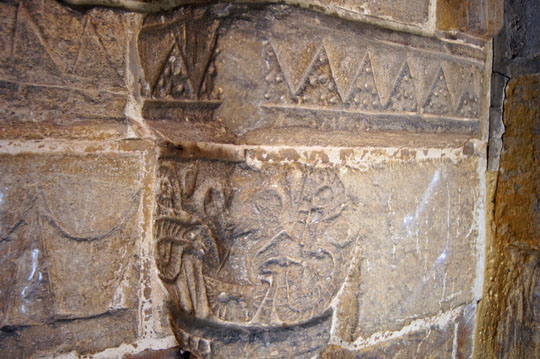 |
|||
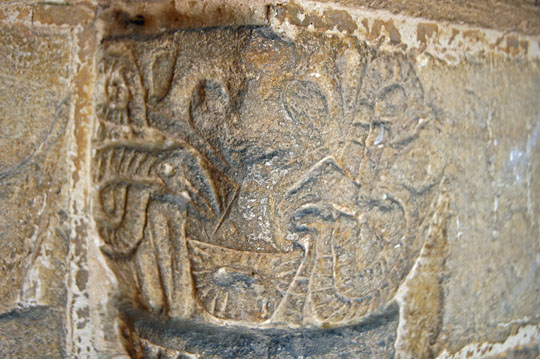 |
|||
|
Harpole’s South West door capitals bring further unexpected delights. The east side has this rather indistinct design on which at least one and possib;y more serpents are writhing. Above it is a simple zig-zag design. |
 |
|||
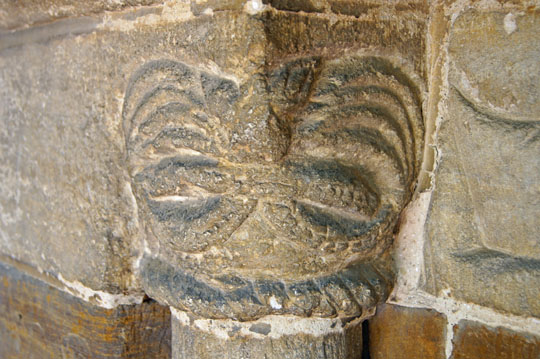 |
|||
|
|
|
|
|
||||||||||||||||||||||||||||||||||||||||||||
|
It is worth comparing the south western door which, with its primitive and semi-pagan carvings with the south eastern door. Superficially they are the same but the stone shafts within the eastern door are much more slender and finely carved. The capitals are simple but quite sophisticated waterleaf designs. What we are seeing here are two doors of a very similar era but reflecting the architectural differences between the Norman south west door and the Transitional of the south east door: the eastern door is altogether more refined but still retains a rounded arch. When we look at the west front, however, we see Early English lancets with pointed arches but still with the alternating colours in the voussoirs (individual stones). Thus, Harpole seems to be a particularly interesting melange of three styles that overlapped each other chronologically. |
|
|
||||||||||||||||||||||||||||||||
 |
|
Harpole’s mysteries continue with a very badly weathered tower corbel table. It’s a bit of a mess and one or two “faces” appear to have been re-cut at sometime in the past. The mystery is in the centre...see below... |
|||||
 |
|||||
|
This double-ended beastie - with what looks like a spider’s web on its back - wouldn’t be out of place on a Norman corbel table, nor on a Decorated period cornice frieze. On an Early English tower, however, this is decidedly unusual. During that period semi-pagan decoration had given way to simple architectural lines with little adornment - see, for example, the simple capitals of the south east door (above). It all adds rather to the impression I have that Harpole was worked on over a decade or two and that the styles were mixed up as the mood took the masons! I don’t mean that as a criticism; far from it. This is the glory of the English Parish Church - all very homespun and a bit of a mystery. And if ever a church proved that architectural styles and habits changed overnight then Harpole is that church! We loved it. Also Northamptonshire has one of the worst records for locked churches in our experience. Harpole is an exception that is open every day. Bravo, Harpole and its churchwardens. |
|||||
